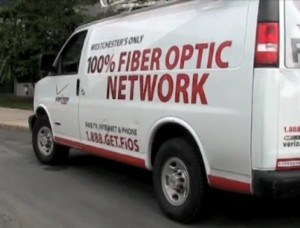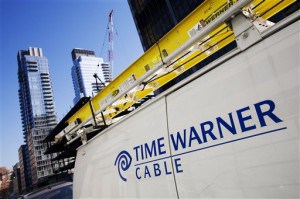 Comcast today announced it was incrementally increasing its 250GB usage cap by 50 additional gigabytes per month as part of a new trial, the first allowance increase since the company started the cap in 2008.
Comcast today announced it was incrementally increasing its 250GB usage cap by 50 additional gigabytes per month as part of a new trial, the first allowance increase since the company started the cap in 2008.
But before so-called “heavy users” celebrate, the company is also announcing it will test overlimit fees for customers who exceed the new 300GB cap.
Cathy Avgiris, Executive Vice President and General Manager, Communications and Data Services, Comcast Cable:
We’ve decided to change our approach and replace our static 250 GB usage threshold with more flexible data usage management approaches that benefit consumers and support innovation and that will continue to ensure that all of our customers enjoy the best possible Internet experience over our high-speed data service. In the next few months, therefore, we are going to trial improved data usage management approaches comparable to plans that others in the market are using that will provide customers with more choice and flexibility than our current policy. We’ll be piloting at least two approaches in different markets, and we’ll provide additional details on these trials as they launch. But we can give everyone an overview today.
The first new approach will offer multi-tier usage allowances that incrementally increase usage allotments for each tier of high-speed data service from the current threshold. Thus, we’d start with a 300 GB usage allotment for our Internet Essentials, Economy, and Performance Tiers, and then we would have increasing data allotments for each successive tier of high speed data service (e.g., Blast and Extreme). The very few customers who use more data at each tier can buy additional gigabytes in increments/blocks (e.g., $10 for 50 GB).
The second new approach will increase our data usage thresholds for all tiers to 300 GB per month and also offer additional gigabytes in increments/blocks (e.g., $10 per 50 GB).
In both approaches, we’ll be increasing the initial data usage threshold for our customers from today’s 250 GB per month to at least 300 GB per month.
In markets where we are not trialing a new data usage management approach, we will suspend enforcement of our current usage cap as we transition to a new data usage management approach, although we will continue to contact the very small number of excessive users about their usage.
The change comes at the same time Comcast is under fire for allegedly giving preferential, cap-free treatment to its own video content through an Xbox video game console app.
Comcast has followed AT&T’s pricing, testing a new overlimit fee of $10 for each 50GB increment customers exceed their allowance. While not outrageous on a per gigabyte basis, the minimum charge of $10 is steep, especially considering Comcast pays only pennies per gigabyte to move traffic.
Stop the Cap! urges Comcast customers to use the occasion to demand the company suspend its unnecessary and arbitrary usage cap altogether.
The best approach for consumers is the one Comcast plans for markets not subject to a trial of their latest Internet Overcharging schemes. Namely, leaving the overwhelming majority of Comcast customers alone while informally reaching out to the tiny minority of customers the company feels are consuming data at levels that create significant problems for other customers on their network. With Comcast’s near-universal adoption of DOCSIS 3 technology, those problems are rarer than ever.


 Subscribe
Subscribe







